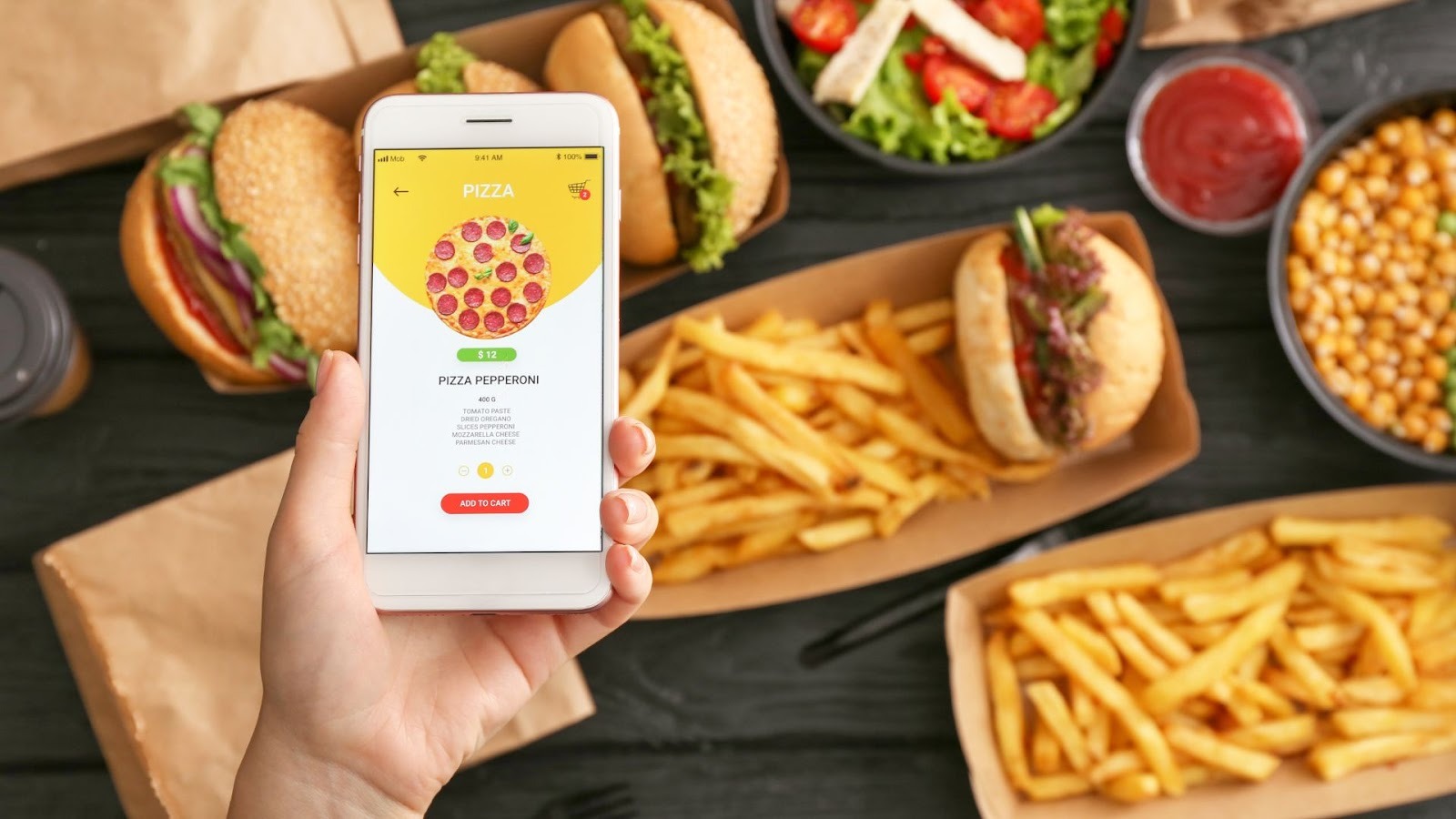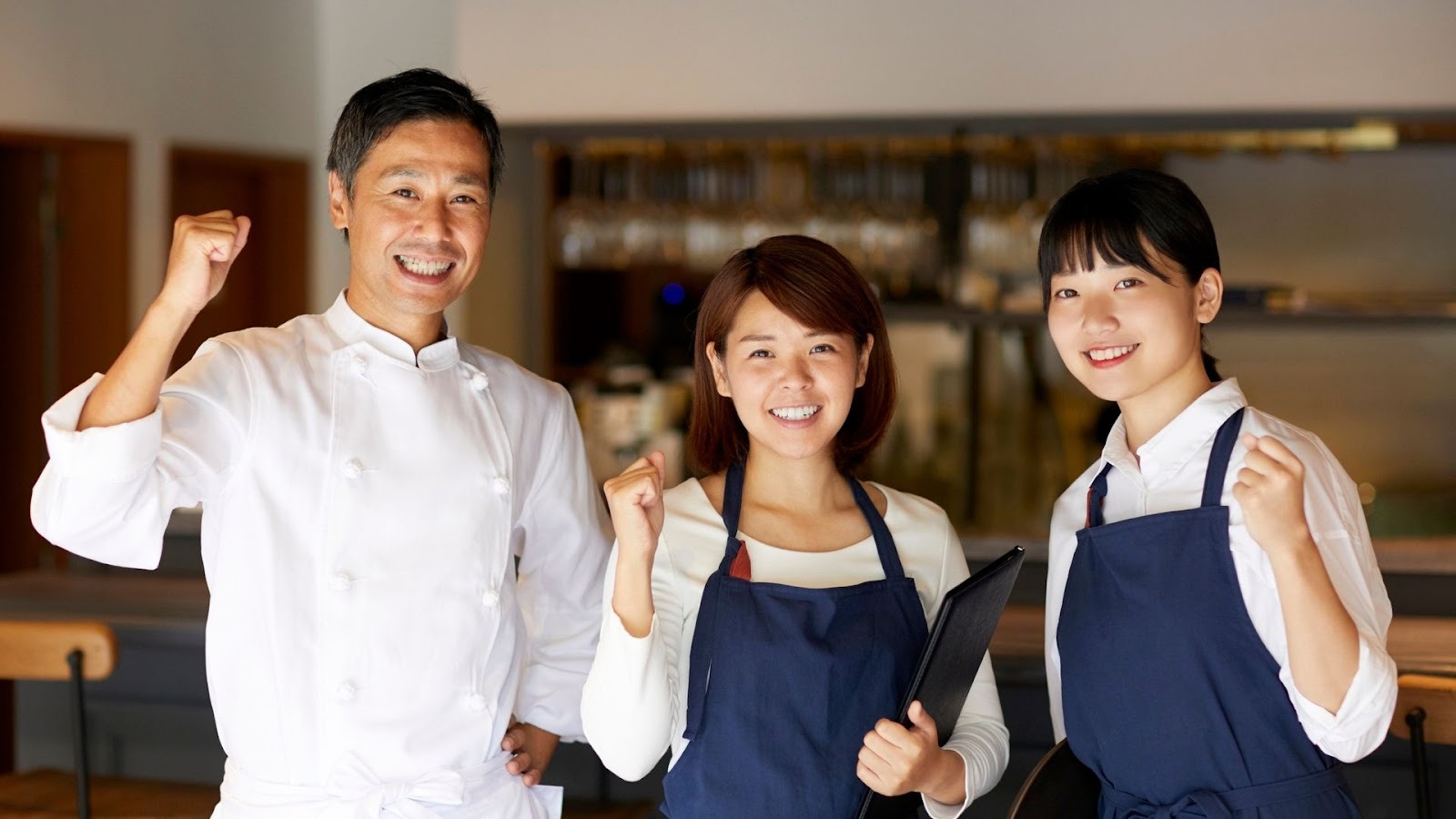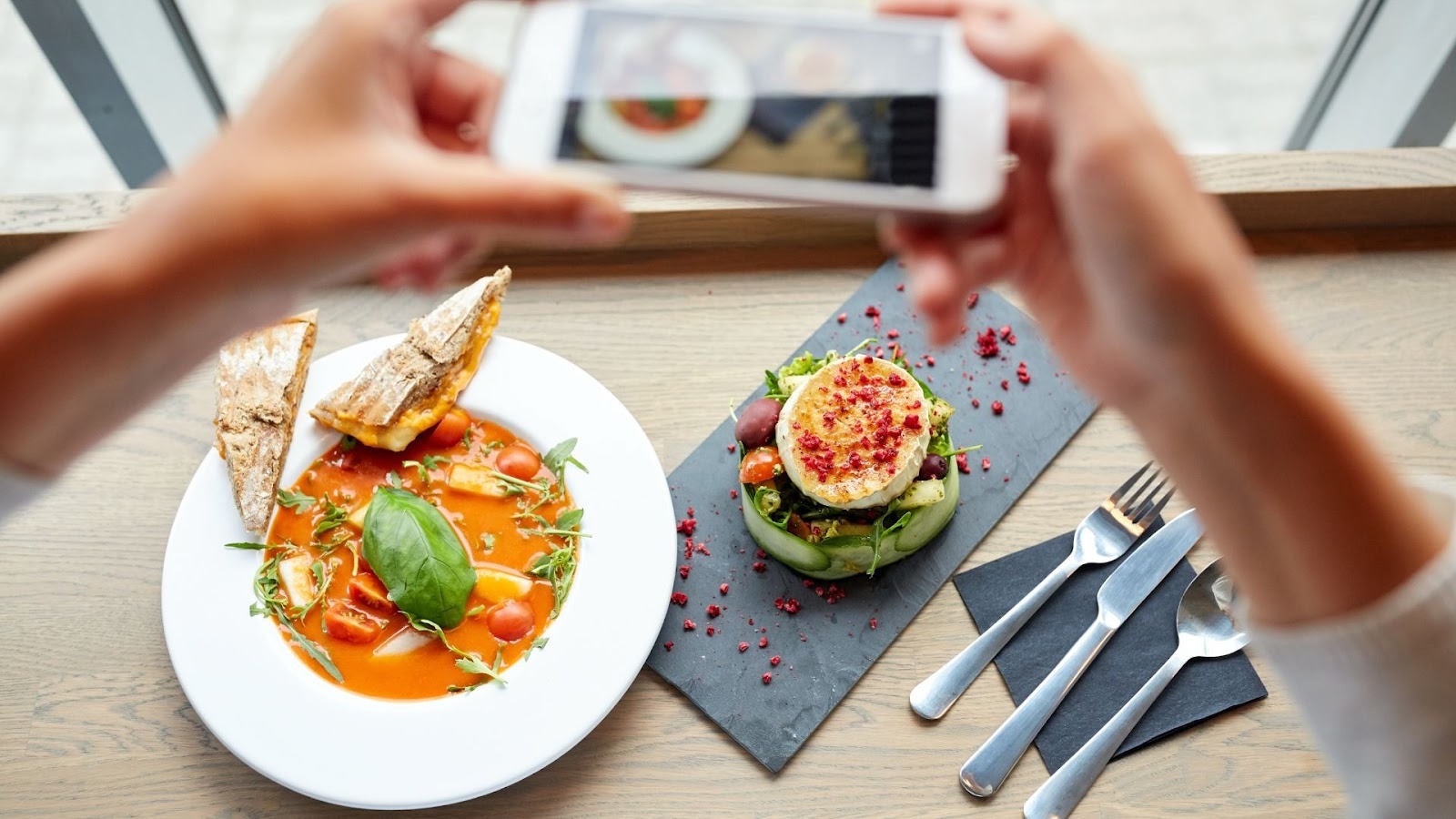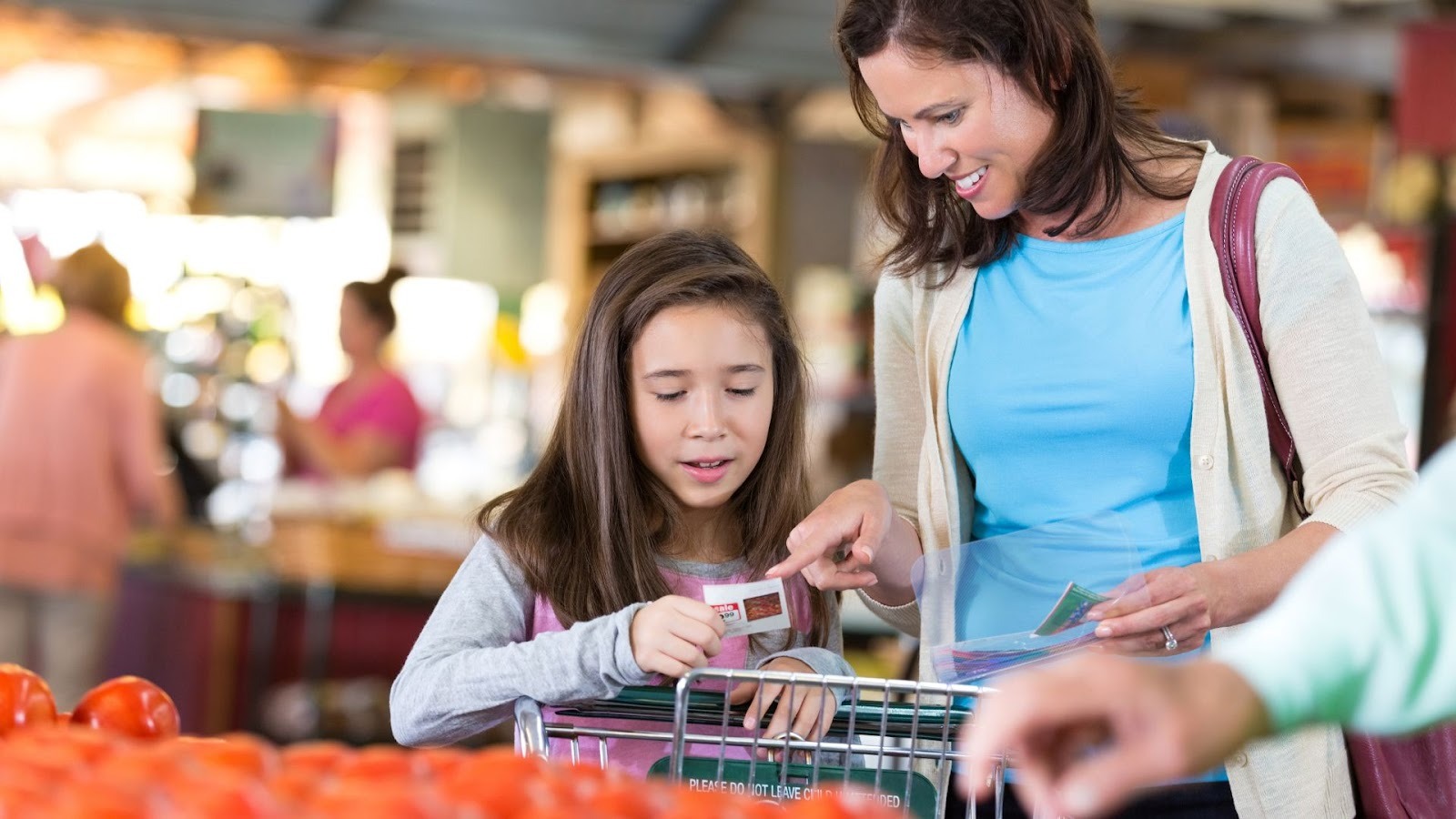November 3, 2025
.jpg)
The restaurant industry is more competitive than ever, and standing out requires innovative marketing strategies that attract new diners while keeping loyal customers coming back. Whether you’re launching your first restaurant or managing multiple locations, creative marketing is essential to drive traffic, increase engagement, and boost revenue.
With so many marketing options available, from social media campaigns and loyalty programs to experiential events and local partnerships, it can be challenging to know which strategies will resonate with your audience. The key is to test different approaches, track results, and refine your efforts based on what works best for your diners.
This guide covers 35 restaurant marketing ideas and trends for 2025, providing practical tips to help you grow your brand, increase sales, and create memorable dining experiences.
At a Glance:
Effective restaurant marketing is a strategic blend of digital and traditional tactics tailored to a restaurant’s unique identity, target audience, and business goals. It begins with establishing a strong, resonant brand identity that permeates your website, social media, and customer interactions.
Engaging customers through user-generated content, loyalty programs, targeted email and SMS marketing, influencer partnerships, high-quality visuals, and events fosters long-term relationships.
Let’s explore 35 of the best restaurant marketing strategies designed to help restaurants attract, engage, and retain customers effectively.
Branding and Online Presence:
Your brand identity shapes how customers perceive your restaurant. It includes your logo, colors, voice, and the overall feeling guests experience, from your signage to your social media tone. A strong, consistent identity helps you stand out and build loyalty.
How to do it:
Example: A coastal seafood restaurant might adopt a clean blue-and-white theme, relaxed typography, and playful messaging to convey freshness and seaside charm. Every touchpoint, from the logo to Instagram captions, reinforces this identity, making it instantly recognizable.
Your website is often the first impression customers get of your restaurant. It should showcase your food, ambiance, and story while making it easy for guests to find key information and place orders or reservations.
How to do it:
Example: A pizzeria redesigns its website with mouth-watering photos, online ordering integration, and a story about its handmade dough. The result: visitors spend longer on the site and online orders increase.

An up-to-date online menu prevents customer frustration and lost sales. Diners often decide where to eat based on what they see online, so clarity and accuracy directly affect your bottom line.
How to do it:
Example: A café notices customer complaints about unavailable dishes. After syncing its website and Google menu with real-time POS data, confusion drops, and online reservations increase.
A strong mission statement tells guests why your restaurant exists and what makes it different. It builds emotional connection and trust while guiding internal decision-making.
How to do it:
Example: A farm-to-table bistro’s mission—“Connecting local farms and families through fresh, seasonal food”—inspires everything from supplier partnerships to their social media posts, deepening their brand authenticity.

Social media is where your restaurant’s personality comes alive. It’s an essential tool to build awareness, engage customers, and showcase what makes you unique.
How to do it:
Example: A brunch café starts sharing short TikTok clips of behind-the-scenes kitchen prep. Within three months, they gain new followers and see weekend bookings spike from viral videos.
A fully optimized Google Business Profile (GBP) helps your restaurant appear in local search results, attract foot traffic, and establish credibility.
How to do it:
Example: A Thai restaurant updates its GBP with new photos and menu links. Within weeks, it appears in Google’s “Top 3” map pack, resulting in an increase in takeout orders.
User-generated content like photos, videos, and reviews from real customers builds authenticity and community. It’s a powerful form of social proof that influences others’ dining decisions.
How to do it:
Example: A taco bar launches a #TacoTuesday photo contest, reposting the best shots on Instagram Stories. Their follower count doubles, and weekly sales climb thanks to organic buzz.

A blog lets your restaurant share its story, highlight staff, promote events, and showcase recipes, strengthening brand loyalty while improving search engine visibility.
How to do it:
Example: A vegan café launched a blog featuring behind-the-scenes farm partnerships and seasonal recipe posts. Traffic to their website grew 40%, and catering inquiries increased.
Customer Engagement and Loyalty:
Online reviews shape how potential customers perceive your restaurant. Actively requesting and responding to feedback builds credibility and shows that you care about guest experiences.
How to do it:
Example: After each meal, a neighborhood bistro sends a friendly thank-you message inviting guests to leave feedback. The manager personally replies to every review, turning even small complaints into opportunities to impress.
Loyalty programs encourage repeat visits and reward consistent customers. When done right, they turn occasional diners into loyal regulars who feel appreciated.
How to do it:
Example: A local coffee shop creates a digital loyalty program where every tenth drink is free. Customers enjoy the simplicity and return frequently, often bringing friends who sign up too.
Email newsletters keep your restaurant top-of-mind by sharing updates, promotions, and stories that build connection and anticipation.
How to do it:
Example: A family-owned Italian restaurant sends a monthly newsletter featuring seasonal dishes, chef stories, and upcoming wine nights, keeping subscribers excited to visit again.
SMS marketing reaches customers instantly and encourages immediate action. It’s perfect for promoting daily specials, limited-time offers, or last-minute events.
How to do it:
Example: A sushi bar sends a quick text to subscribers about a weekend “buy one, get one” offer. Customers respond right away, filling tables without extra ad spend.
Contests and giveaways generate buzz, boost engagement, and attract new customers, both online and in person.
How to do it:
Example: A burger joint runs a “Create Your Own Burger” contest where followers submit ideas on Instagram. The winning burger becomes a limited-time menu item, and the creator gets dinner for two.

Highlighting your team builds authenticity and humanizes your brand. Customers connect more easily when they see the faces behind their favorite meals.
How to do it:
Example: A Mexican restaurant shares weekly “Meet the Team” posts on Instagram, introducing cooks, servers, and baristas. Customers start greeting staff by name and feel part of the restaurant’s story.
Hosting themed events or private experiences creates excitement, draws crowds, and encourages repeat visits. It also strengthens your community presence.
How to do it:
Example: A wine bar hosts monthly tasting nights with local vineyards. Guests enjoy meeting winemakers, sharing experiences, and booking early for the next session.
Visual and Content Marketing:

Great photography can turn casual browsers into paying customers. Professionally styled food images highlight your dishes’ textures, colors, and freshness, creating instant craving appeal both online and offline.
How to do it:
Example: A Mediterranean café refreshes its website and delivery listings with new professional photos. The crisp images of grilled kebabs and colorful salads attract more online orders within days.
Videos bring your restaurant’s personality to life. From cooking demonstrations to behind-the-scenes glimpses, video storytelling connects emotionally with your audience and boosts engagement on social platforms.
How to do it:
Example: A pizza shop posts a “from dough to slice” video showing how its famous margherita is made. The clip goes viral locally, leading to a surge in weekend bookings.
Hashtags make your content discoverable and help your restaurant join trending conversations. The right mix of branded and popular hashtags boosts reach and visibility across social media.
How to do it:
Example: A brunch café launches the hashtag #SunnySideSundays and encourages guests to use it when posting their meals. The feed fills with customer photos that double as free marketing.
Partnering with food influencers or local bloggers introduces your restaurant to new audiences through trusted voices. Authentic reviews and social mentions often outperform traditional ads.
How to do it:
Example: A new Korean BBQ spot invites a local food vlogger for an exclusive tasting. Her post showcasing sizzling platters and group dining moments attracts dozens of new visitors that weekend.
Local and Digital Advertising:
Paid ads help you reach the right diners at the right time. With smart targeting based on location, interests, and dining habits, you can promote special offers, new menu items, or events directly to local audiences.
How to do it:
Example: A burger joint launches geo-targeted Facebook ads promoting its lunch combo. Within days, nearby office workers start ordering online and visiting in person during lunch breaks.
Local SEO ensures your restaurant appears in “near me” searches when hungry customers are nearby. An optimized presence across Google, Yelp, and other directories increases visibility and drives walk-in traffic.
How to do it:
Example: A family-owned pizzeria updates its Google profile and adds city-specific keywords to its site. Within weeks, it starts ranking in the top three results for “best pizza near me.”
Promoted listings on apps like Uber Eats, DoorDash, and Grubhub help new customers discover your restaurant in crowded marketplaces. These ads increase visibility and attract impulse orders during busy meal hours.
How to do it:
Example: A sushi restaurant runs a sponsored listing on Uber Eats during dinner hours. The increased visibility doubles delivery orders for the week and draws new repeat customers.
Automation makes personalized marketing easy and efficient. By sending targeted messages based on behavior like birthdays, past orders, or visit frequency, you can boost engagement and retention.
How to do it:
Example: A café’s automation system texts regular customers about a “buy one, get one” offer on their favorite drinks. The personalized message drives a spike in weekday visits.
Traditional and Experiential Marketing:

Physical marketing still works, especially for nearby residents and office workers. Well-designed coupons and flyers with exclusive offers can attract new guests and re-engage past customers.
How to do it:
Example: A new café distributes flyers offering “20% off your first coffee order” around nearby coworking spaces. Within a week, dozens of new customers stop by to redeem the offer.
Collaborating with nearby businesses or local events can expand your audience and build strong community ties. Cross-promotions or co-sponsored events introduce your restaurant to people who already trust your partners.
How to do it:
Example: A bakery partners with a local bookstore to host “Coffee & Chapters” mornings, offering discounted pastries for readers. Both businesses see an increase in loyal customers.
Hosting or joining community events strengthens your reputation and fosters customer loyalty. People remember restaurants that give back or support causes close to home.
How to do it:
Example: A family restaurant hosts a “Dine for a Cause” night, donating a portion of proceeds to a nearby children’s charity. The event sells out and earns glowing community support.
Your restaurant’s interior is valuable marketing space. Eye-catching signage can encourage upsells, promote loyalty programs, and remind customers about upcoming events or specials.
How to do it:
Example: A casual diner installs digital menu boards showcasing its loyalty program. Guests sign up at checkout, instantly earning points toward their next meal.
Offering free WiFi isn’t just a convenience, it’s a smart way to grow your marketing list. With customer consent, you can collect email addresses for future promotions and updates.
How to do it:
Example: A quick-service restaurant offers free WiFi that requires a simple email login. Guests soon receive an email inviting them to join the loyalty program, increasing repeat visits.
Celebrating food holidays or themed events keeps your restaurant buzzworthy and social-media friendly. It’s an easy way to attract attention, showcase creativity, and increase midweek traffic.
How to do it:
Example: A taco bar runs “Taco Tuesday Fiesta” with special combos and a live DJ. The event fills the dining room weekly and gains strong engagement online.
Technology and Innovation:

Streamlined reservations improve guest convenience and help you manage seating efficiently. Online booking tools reduce no-shows, optimize table turnover, and capture valuable customer data for future marketing.
How to do it:
Example: A modern bistro adds an online reservation system to its website, making it easy for guests to book 24/7. The restaurant sees fewer no-shows and better table management during peak hours.
A responsive, mobile-optimized site is essential for attracting diners who browse and order on their phones. A web app provides app-like functionality, such as ordering, loyalty access, and reservations, without requiring a download.
How to do it:
Example: A pizza restaurant builds a mobile-friendly web app where guests can view the menu, place orders, and earn rewards. Customers love the convenience, and mobile orders quickly outpace phone calls.
Integrating customer relationship management (CRM) tools with your POS system gives you powerful insights into guest behavior. This data helps you personalize marketing, improve loyalty, and forecast demand more accurately.
How to do it:
Example: A wine bar syncs its POS with a CRM platform, allowing it to track favorite bottles and order patterns. Guests receive personalized recommendations before their next visit, increasing average spend per table.
Reputation and Crisis Management:
Active reputation monitoring helps restaurants maintain trust and attract new customers. By tracking mentions and reviews across platforms, you can respond quickly, fix issues early, and strengthen your brand’s public image.
How to do it:
Example: A local café tracks online mentions weekly and responds to every review. When guests praise the coffee, the owner thanks them publicly, boosting credibility and visibility in search results.
Negative reviews are opportunities to show professionalism and earn customer trust. Responding thoughtfully demonstrates accountability and commitment to improvement, often turning critics into loyal patrons.
How to do it:
Example: After receiving a review about slow service, a restaurant owner replies with an apology and a promise to address staffing during peak hours. The customer updates their review later, praising the quick follow-up.
Sharing media mentions, awards, or influencer features adds credibility and draws new customers. Press coverage serves as social proof, reinforcing your restaurant’s quality and community reputation.
How to do it:
Example: When a neighborhood magazine names a bakery the “Best Brunch Spot,” the team shares the article on social media and adds it to their website banner. Within weeks, weekend traffic noticeably increases.
To succeed, your restaurant’s marketing must be holistic, customer-centric, and adaptable. Authenticity, quality content, and excellent customer experience create lasting connections that turn first-time visitors into loyal patrons.
Modern restaurant marketing goes beyond social media and promotions, it starts with understanding data. iOrders helps restaurants uncover actionable insights about customer preferences, ordering trends, and operational efficiency.
By unifying online ordering, analytics, and engagement tools, it transforms everyday transactions into data-driven intelligence that supports smarter marketing and long-term growth.
With iOrders, restaurants gain a single, data-powered platform that strengthens operations, improves profitability, and supports informed marketing decisions, all without relying on outside tools or expensive commissions.
Great restaurant marketing begins with knowing your customers and acting on real insights, not guesswork. The best strategies combine creativity with data-driven decisions that strengthen brand loyalty, boost visibility, and drive repeat business.
iOrders makes that possible by giving restaurants the tools to understand what’s working and why. From real-time menu performance and customer ordering trends to loyalty tracking and analytics, it helps owners market smarter, optimize operations, and build lasting customer relationships.
Book a free demo with iOrders today to see how your restaurant can turn data into growth and make every marketing decision count.
1. How can AI-driven personalization reshape restaurant marketing in 2025?
AI enables hyper-personalized marketing by analyzing customer preferences and behaviors to tailor menu recommendations, offers, and communications, enhancing guest loyalty and increasing repeat visits through timely, relevant engagement.
2. What are the challenges of integrating multiple marketing platforms in restaurant marketing?
Restaurants often struggle with siloed systems that don’t communicate, leading to inefficiencies and inconsistent messaging. Overcoming this requires integrated platforms or middleware solutions that unify data for coherent multichannel campaigns.
3. How important is managing real-time online reputation and sentiment for restaurants today?
Given that 92% of customers expect responses within 24 hours to complaints, actively monitoring and responding promptly on multiple review platforms can prevent negative reviews from escalating and demonstrate commitment to service.
4. What role do voice and video search trends play in restaurant marketing strategy?
With the rise of smart assistants and video content consumption, optimizing for voice search queries and producing engaging visual material (like video menus or kitchen tours) can improve discoverability and customer engagement.
5. How can loyalty programs evolve beyond discounts to drive meaningful customer engagement?
Modern loyalty platforms integrate personalized rewards, exclusive experiences, and digital wallets, moving beyond simple point accrual to foster emotional connections and provide unique value that aligns with customer lifestyles.
6. Why is balancing brick-and-mortar and digital presence critical for restaurant success?
Despite digital growth, in-person dining remains significant. Seamless experiences across online ordering, reservations, and physical visits ensure customer convenience and satisfaction, maximizing overall revenue.
7. What innovative local marketing tactics are effective in a crowded restaurant market?Tactics include leveraging community social media groups for authentic engagement, hosting localized events themed to neighborhood culture, and partnering with other local businesses to cross-promote, all to build a loyal, locality-based customer base.